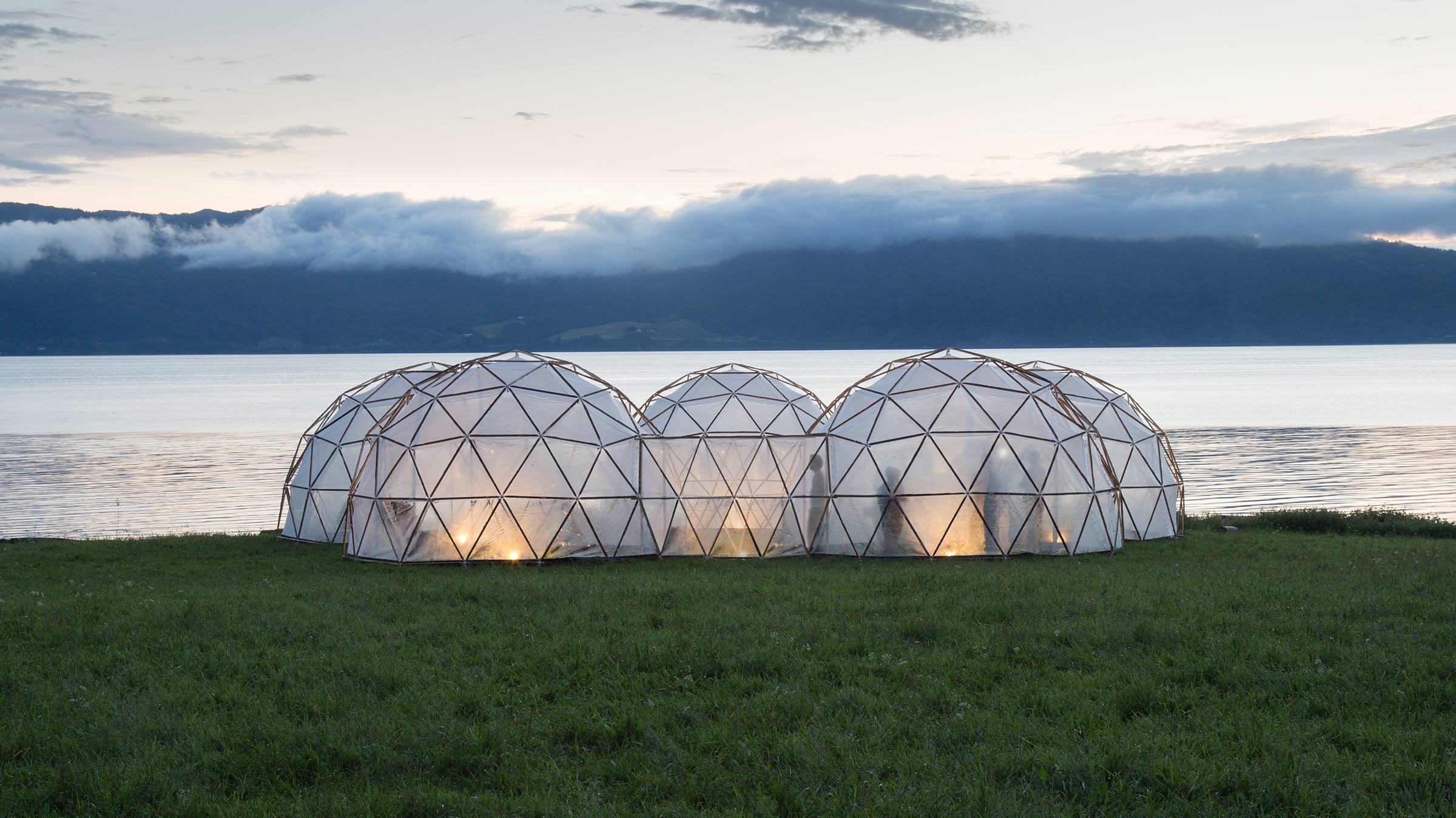The artist captured air samples from major cities across the globe in his latest installation, which has been deemed unfit for public exposure.
Known for his installations designed to make audiences come face-to-face with pressing ecological issues, it was announced last Thursday that artist Michael Pinsky has had to totally change the concept of an artwork because it was deemed to be too toxic for the general public.
Pinsky’s original idea was to install a series of geodesic domes, six meters high and three meters wide, in the courtyard of Somerset House in London, recreating the fumes and smells of various cities around the world. Called Pollution Pods, the domes were intended to be a collection of air from London, New Delhi, San Paulo, and Beijing, as well as a small peninsula in the north of Norway, but health and safety officials have said the air collected from London, where the exhibition is being held, is too polluted. The issue was first raised when the artist began talking to scientists about his idea. Pinsky was advised that he couldn’t release those specific types of toxins into an enclosed space “because it would kill people.” Talking to the BBC, Pinsky stated, “It was at that moment that I knew it would never be given the green light by any ethics committee.”
The work was ultimately meant to highlight that only when conditions are side-by-side can anyone appreciate the enormous disparages different places across the world suffer from. In an interview with the BBC, Pinsky said one person referred to Pollution Pods as a form of wine tasting: “They compared it to the nuances of air pollution, like ‘hmm there’s a lovely sulphuric tone to Beijing.’”
Despite the ban, the exhibition has still gone ahead, albeit with some rather significant changes. Rather than releasing a like-for-like version of London’s atmosphere, Pinsky has had to employ state of the art technology to purify the air of any deadly toxins. On the Somerset House website, the gallery clarifies how the new version of the artwork mitigates any risk: “Using Airlabs technology, all harmful gases will be fully removed, making it totally pure and reinstalling the sense of what it is like to breathe truly clean air.”
Originally commissioned by Norwegian University of Science and Technology (NTNU) in Trondheim for Climart, the project faced similar health and safety scrutiny when it first opened in Norway, but regulations are far more rigorous in the British capital. Negotiating with officials, Pinksy revealed that even if he had compiled all the equivalent chemical certificates and lowered the number of nitric oxides and carbon monoxide, the exhibition still would have been restricted to anyone 14-years-old or younger. “I have a six-year-old son who is breathing in this stuff every day,” he told the Today Program.







